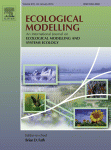Ver ítem
- xmlui.general.dspace_homeCentros Regionales y EEAsCentro Regional Santa FeEEA RafaelaArtículos científicosxmlui.ArtifactBrowser.ItemViewer.trail
- Inicio
- Centros Regionales y EEAs
- Centro Regional Santa Fe
- EEA Rafaela
- Artículos científicos
- Ver ítem
A long-term sustainability assessment of an Argentinian agricultural system based on emergy synthesis
Resumen
By tracking the different flows of emergy (the total amount of solar energy that was directly or indirectly required in a production process) it is possible to account for all environmental work previously involved in generating a resource, product or service. This donor-side perspective for environmental assessment has the advantage over usual economic and energy analysis in the ability to value renewable and non-renewable environmental resource inputs
[ver mas...]
By tracking the different flows of emergy (the total amount of solar energy that was directly or indirectly required in a production process) it is possible to account for all environmental work previously involved in generating a resource, product or service. This donor-side perspective for environmental assessment has the advantage over usual economic and energy analysis in the ability to value renewable and non-renewable environmental resource inputs both from the economy (purchased resources) and from nature (free resources) and compute their values on a common basis. On this basis, this paper presents the use of emergy synthesis on three cropping systems of the Pampa Region (Argentina) with the aim of evaluating the long-term trends (1984–2010) in emergy use and the effect of the adoption of new technologies in the study area. The cropping systems evaluated were wheat/soybean double cropping (W/S); maize (M), and spring soybean (S). Results form the emergy synthesis showed that the cropping systems studied were not only more productive but also more efficient over time. The range of the observed values for the emergy yield ratio (EYR) were 1.77–5.59, proving that the three cropping systems are considerably supported by renewable and locally available resources. The environmental load ratio (ELR) that represents the ratio between non-renewable and renewable resource inputs ranged between 0.3 and 1.43, a significant lower range compared to other extensive cropping systems. However, when inspecting the temporal dynamics of the emergy indicators, M and W/S showed a statistically significant optimum behavior, with the most favorable values just before the use of a more intensive cropping management represented by the use of genetically modified cultivars, the no-tillage adoption and the more frequent use of fertilizers at higher doses. By the time of these adoptions, both the EYR and ELR showed a breakpoint in their temporal dynamic, exhibiting a negative slope during the last years of the time series. Although the observed ranges of the emergy indicators can place these production systems among the most efficient and with the lower environmental impact, the negative trend in the emergy indicators shown in recent years constitutes a risky scenario in terms long-term sustainability.
[Cerrar]

Autor
Ferraro, Diego Omar;
Benzi, Patricia;
Fuente
Ecological Modelling 306 : 121-129 (June 2015)
Fecha
2015-06-24
ISSN
0304-3800
Formato
pdf
Tipo de documento
artículo
Palabras Claves
Derechos de acceso
Restringido
 Excepto donde se diga explicitamente, este item se publica bajo la siguiente descripción: Creative Commons Attribution-NonCommercial-ShareAlike 2.5 Unported (CC BY-NC-SA 2.5)
Excepto donde se diga explicitamente, este item se publica bajo la siguiente descripción: Creative Commons Attribution-NonCommercial-ShareAlike 2.5 Unported (CC BY-NC-SA 2.5)

